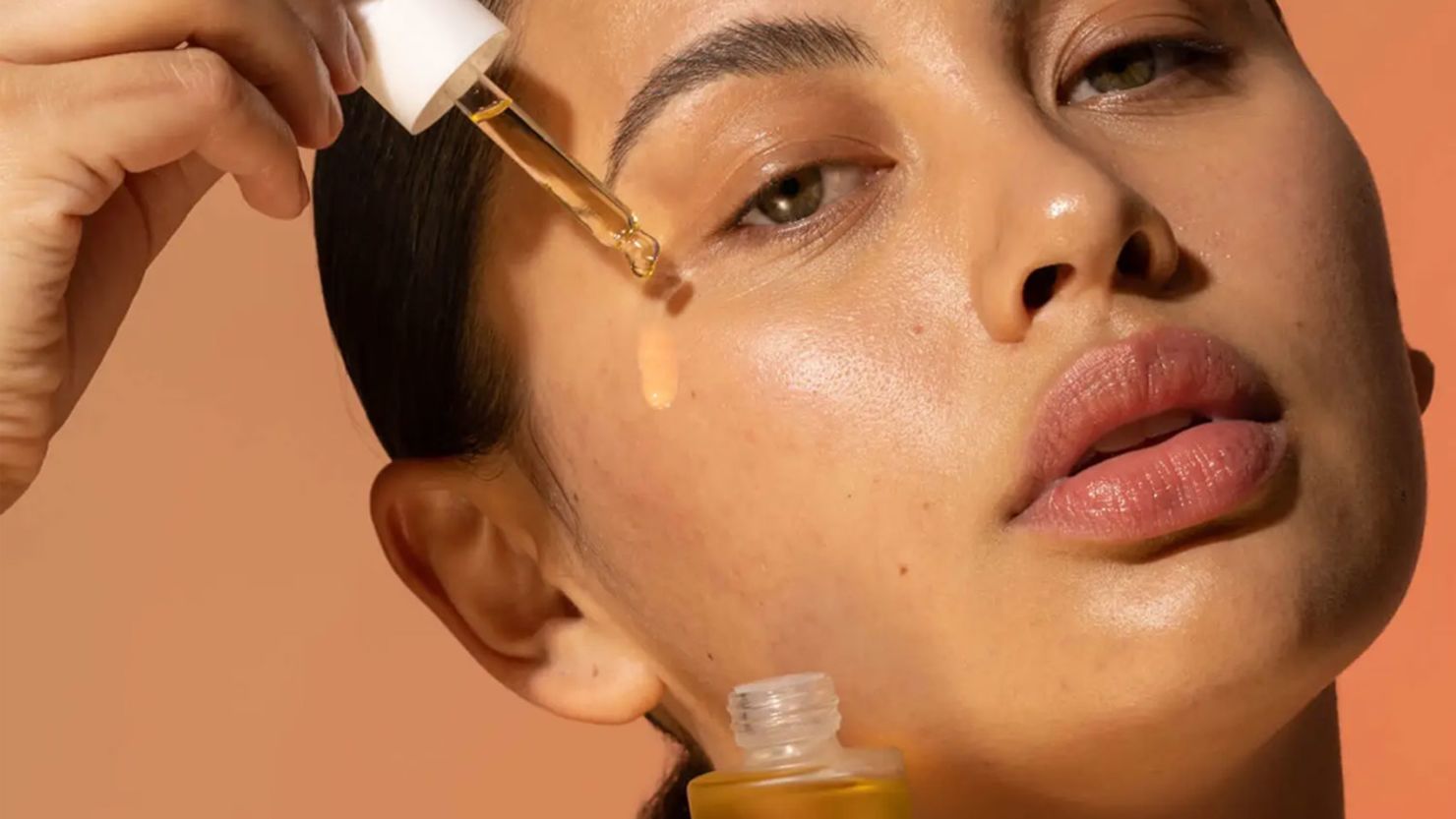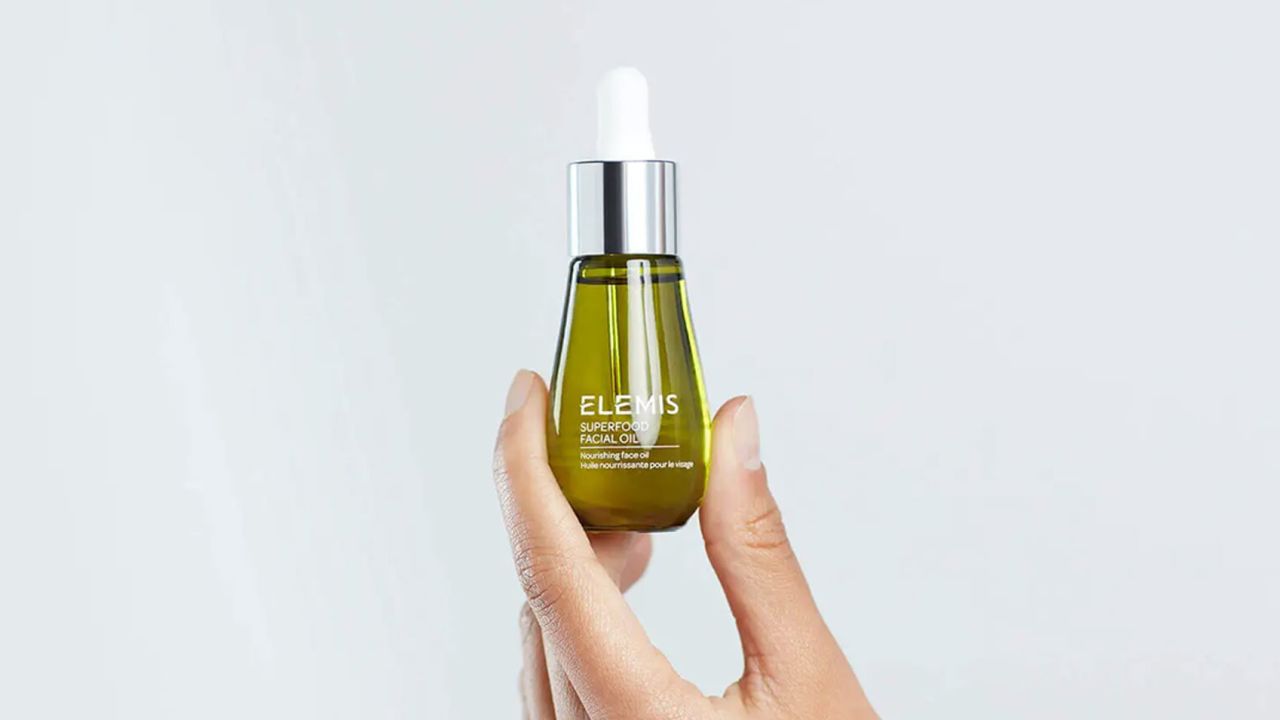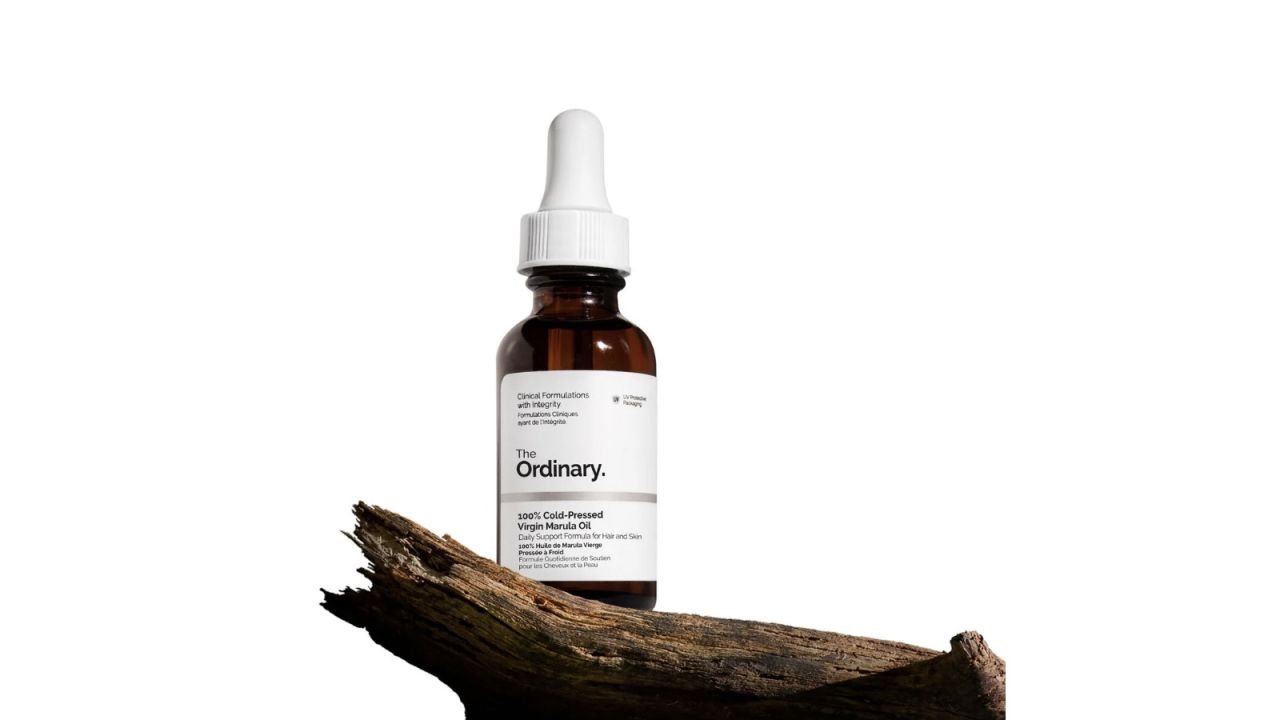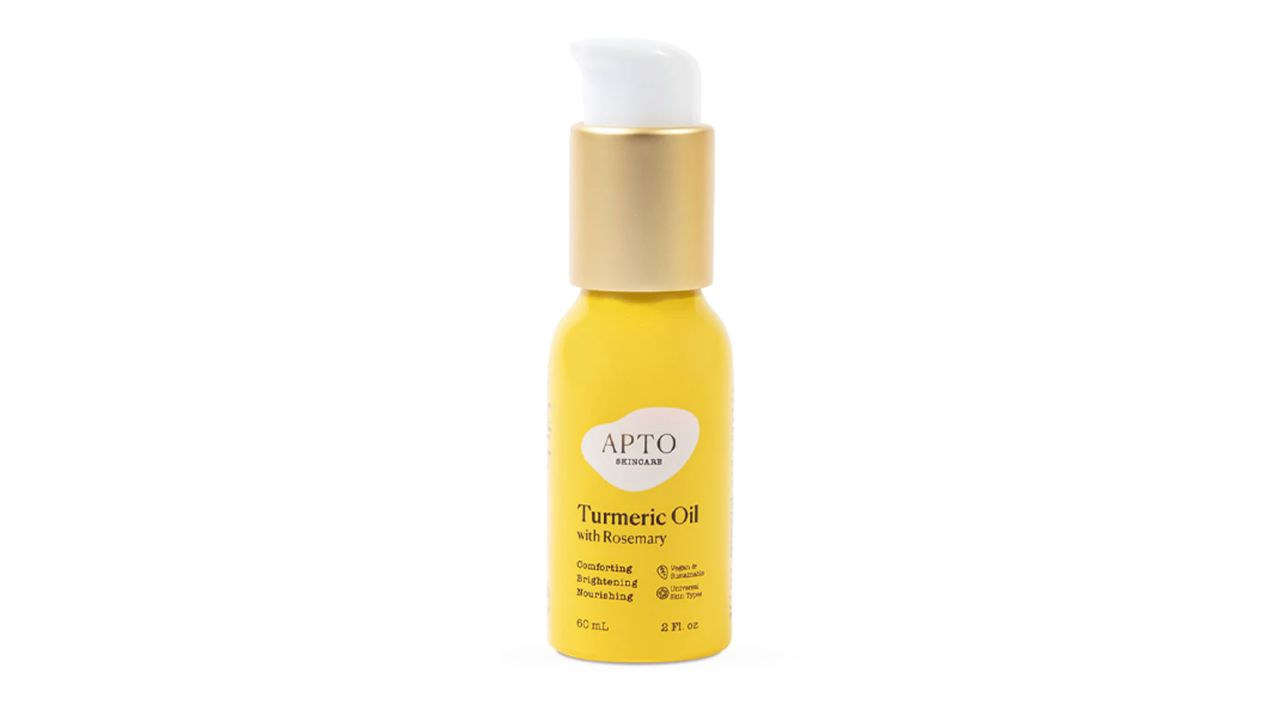In the chilly fall and winter months, it’s natural to bundle up in layers to keep yourself protected and warm. The same approach works for skin care, and face oil is one of the most helpful layers in preserving the skin’s hydration and glow. “[Face oil] will help to soften and moisturize the skin while providing additional benefits such as preventing free radical damage, nourishing and healing,” says Apto Skin Care esthetician Despina Freimanis.
Who should use face oi?
Dr. Loretta Ciraldo, a Miami-based board-certified dermatologist and founder of Dr Loretta skin care, recommends face oil for all skin types year-round, although it can be especially beneficial during the colder months. “Face oils are very good for skin that is dry, autumn and winter skin, mature skin, lackluster skin and, in some cases, acne-prone skin,” she says. “There are seasonal changes in our skin when autumn gives way to winter, and our skin undergoes a slowdown in its own natural healthy oil production.”
Even oily and acne-prone skin types can benefit from using face oil — it just depends on what type of oil you use. New York-based board-certified dermatologist Dr. Marisa Garshick explains that oilier and acne-prone skin types will want to look for noncomedogenic oils and ingredients, as these won’t clog the pores and contribute to breakouts. “Lightweight, noncomedogenic oils including marula, hemp seed, safflower, sunflower, grapeseed, argan, sweet almond, tea tree and jojoba may be good options for those with oily or acne-prone skin,” she says.
In addition to checking the ingredients label, you’ll also be able to feel a difference with how different face oils feel on the skin. “The size of the oil determines how much it can penetrate, as oils with a larger molecular size won’t be able to penetrate as well and will be more likely to sit on the surface as a protective barrier,” Garshick says. “Lighter oils will sink into skin quickly without clogging the pores which is what makes them a good option for those with oily or acne-prone skin.” Those with dry skin, on the other hand, may benefit from heavier face oils that can hold hydrating ingredients from your other skin care products close to your skin. It’s the same principle that the skin trend “slugging” is based on.
How to use face oil
Whether you’re using face oil to help combat seasonal dry skin or making it a permanent part of your skin care routine, it’s easy to add to your regimen. A few drops usually do the trick and what step you apply it in your routine depends on your preference. Garshick recommends using it as the “last step in a skin care routine to help lock in moisture,” but Ciraldo advises “applying skin care products from thinnest to thickest in consistency,” and thus applying it after cleansing and using toner, but before moisturizing.
Here, the experts share the 15 best face oils, with options for each skin type from dry to oily, combination and acne-prone.
Best face oils
“Marula oil, rich in fatty acids, helps to moisturize the skin without leaving the skin feeling too greasy,” Garshick says. “It can also help reduce redness and inflammation that can often go along with dry skin.” Freimanis also recommends this face oil, saying, “It’s like rehab for your skin. A good face oil is all in the quality of the ingredients rather than the complexity of the blend. Drunk Elephant’s no-filler formula contains nothing more than high-grade, cold-pressed oil from the pip of the African marula fruit: an extract high in antioxidant and antimicrobial properties that can decrease oiliness a bit.”
Great for anti-aging, “this oil helps to improve the appearance of fine lines and wrinkles, while leaving the skin looking more radiant and hydrated,” Garshick says. Thanks to its blend of “avocado, olive, babassu, raspberry seed, blueberry seed and evening primrose oils, this works to nourish the skin, while also incorporating a collagen matrix to help firm the skin,” the dermatologist explains.
This splurge face oil has reached cult status for a reason. It feels luxurious on the skin and leaves it feeling dewy and luminous. The 100% natural formula consists of 22 botanical ingredients, including skin barrier-supporting oils loaded with omega fatty acids. Grapeseed, avocado, carrot seed and rose hip are just a few of the powerhouse oils that make this face oil so potently healing.
Editors’ favorite face oil
I’ve been using this silky serum for years as part of my daytime skin care (it helps prep the skin for makeup too), and I especially love it for the drier fall and winter months. It’s also one of Ciraldo’s favorites for dry skin, sharing that the “oil-based serum traps in moisture and gives skin an immediate glow and smooth texture,” adding that it’s “loaded with healthy skin oils including glycolipids, vitamin E, linoleic and linolenic acids.” (Linoleic and linolenic acids are essential fatty acids. Examples of the former include sunflower and safflower oils, while the latter includes chia seeds and grapeseed oil.)
Another expert-approved pick that I’ve personally tried, the Kiehl’s Midnight Recovery Concentrate hydrates the skin with friendly oils that won’t cause breakouts. “With lavender essential oil to calm redness and evening primrose oil to heal, this is a favorite nighttime product for some of my acne patients,” Ciraldo says. I personally use it as the last step in my nighttime routine — the subtle lavender scent is so relaxing right before bedtime too — and always wake up with ultra-soft skin.
Board-certified dermatologist Dr. Ashley Magovern of Manhattan Dermatology in Manhattan Beach, California, loves this face oil. What makes it unique is the biphase formula, which you shake to combine before applying. In the cold, dry months, I’ve added this to my daytime routine as an extra layer of defense against moisture loss. “This oil has stabilized vitamin C to help brighten and even skin tone,” Magovern adds.
Face oils for dry skin
Magovern also recommends this anti-aging face oil. “I love how simple this face oil is — it only has three natural ingredients!” she says. “This oil is packed with antioxidants and retinoids that support collagen production and cellular turnover.”
Made with 18 carefully selected oils, this face oil treats signs of aging while keeping the skin glowy and hydrated. The vegan formula is safe for all skin types and features wrinkle-fighting bakuchiol along with conditioning avocado oil, restorative grapeseed oil, replenishing sea buckthorn oil and more.
“This nighttime oil is intensely nourishing for the skin,” Magovern says. “I love how rich its formula is, yet the product feels lightweight upon application.” It contains botanical extracts and oils from calendula flower, sunflower, rosemary and more, but its punicic acid is the powerhouse ingredient that provides a boost of anti-aging antioxidants.
Dehydrated skin will drink up this product’s oils and actives, leaving it restored and glowy. Organic camellia seed oil, squalane, amla oil, rose hip oil and more are boosted by the patent pending Matrikynes Regenerative Bone Peptides, which are naturally derived and clinically proven to improve symptoms of a compromised skin barrier such as inflammation and skin damage.
This hydrating, quick-absorbing daytime oil can be worn as a primer under makeup. The complexion booster is infused with plumping hyaluronic acid, anti-aging bakuchiol and antioxidant-rich peony tea.
Face oil for oily skin
Ciraldo and Magovern agree this superfood-packed face oil is a great option for those with oily skin. Ciraldo says it’s “a lighter-weight oil rich in omega-3’s and natural oils derived from plant sources [including broccoli, rose hip, flaxseed and daikon radish].”
Noncomedogenic marula oil isn’t greasy or heavy — the versatile ingredient helps hydrate the skin and can also be used to smooth and nourish the hair.
All 16 skin-loving oils — including meadowfoam, hemp, sunflower, olive and grapeseed — in this face oil are noncomedogenic, so it’s safe for all skin types without the worry of clogging pores or breaking out.
Face oil for combination skin
When picking a face oil, Freimanis says squalane is a great ingredient to look out for. “Squalane is a favorite, as it’s similar to our own skin’s oil, so it’s great for all skin, including oilier skin types, because it hydrates without clogging pores or making skin feel greasy.” This emollient blend features squalane, along with jojoba seed, sunflower, olive, rose hip seed and other naturally derived oils.
This face oil contains derm-approved ingredients like jojoba seed oil, squalane and rose hip seed oil, among other antioxidant-rich oils that can benefit combination skin. I like using this one for gua sha since it helps the tool glide but sinks into the skin when massaged in. As Freimanis notes, using a face oil (with or without a tool)?“will help you incorporate some light facial massage into your routine to gently lift and tone your skin because it will give your fingertips enough slip to move over the skin without pulling at it. We want to avoid any tugging or pulling at the skin because this can damage the underlying structure of the skin, including collagen and elastin, and cause unwanted wrinkles.”
Face oil for acne-prone skin
Freimanis says this turmeric and rosemary face oil is great for acne-prone skin. “The face oil is deeply nourishing, improving the appearance and radiance of the skin,” she says. “The all-natural formula of omega-rich oils and vitamins are combined with turmeric, which is anti-inflammatory and has antiseptic and antibacterial properties to fight pimples and breakouts.”
Garshick recommends this salicylic acid-containing oil that nourishes the skin while helping to reduce the appearance of breakouts and blemishes. “It contains tea tree oil to help clarify the skin as well as chamomile oil to soothe the skin,” Garshick says.
Formulated to help with breakouts, this product has a watery oil consistency that feels lightweight on the skin and delivers balancing lineolic acid and rose hip oil to the skin, along with other noncomedogenic oils like jojoba, sunflower and grapeseed.
Full of noncomedogenic oils like jojoba seed, marula seed and evening primrose, plus the anti-inflammatory properties of broad-spectrum CBD, this face oil was developed with crowdsourcing from estheticians, dermatologists and people of all skin types to ensure that it would be a great option for anyone to try — even those who don’t typically like face oils.










































